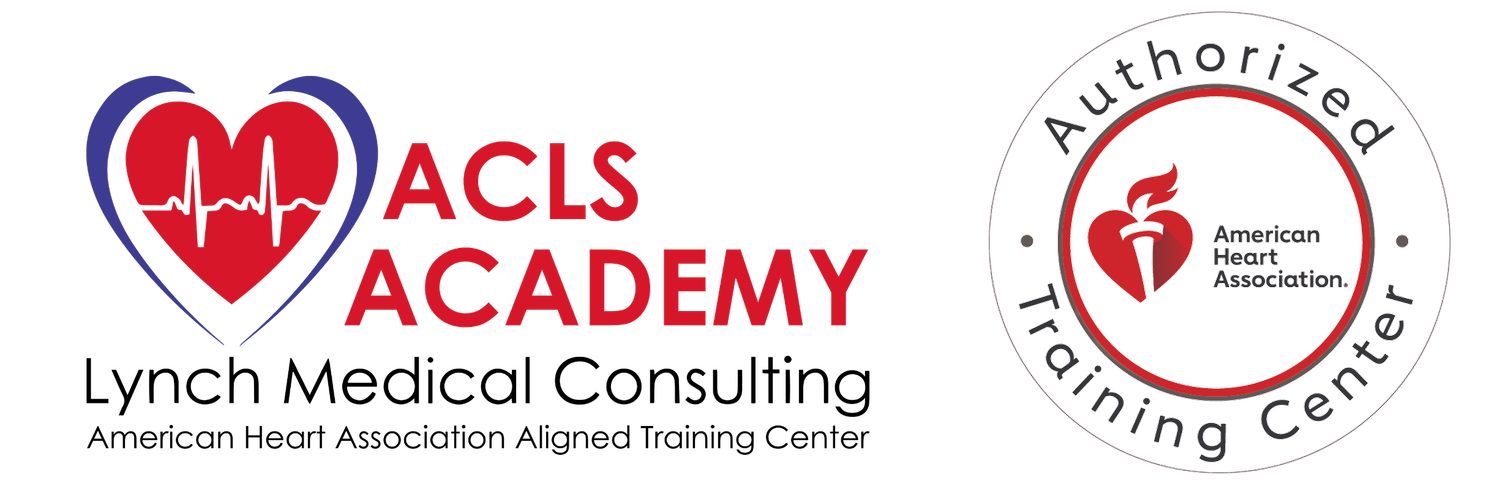What are CPR, AED, and BLS?
We often receive questions about the differences between CPR/AED and BLS courses and certifications. While they are similar, nuances define what type of students should take these classes and the content of the courses. Let's start by defining each of these and then better understand their differences and similarities.
Most of us are familiar with the term CPR, which stands for Cardiopulmonary Resuscitation, and is an emergency procedure used if a person's heart stops beating or breathing ceases. In essence, CPR is a manual heartbeat. CPR combines chest compressions and artificial ventilation (breathing) to save a person's life. By performing chest compressions, you are manually pumping the blood to a person's vital organs, and by including breaths in the CPR process, you are oxygenating their blood. CPR is a process. It consists of 30 chest compressions and 2 breaths on a repeated cycle. When performed right away, it can increase a person's chances of survival after cardiac arrest.
While CPR may be more widely known, an AED, which stands for an automated external defibrillator, is just as important in lifesaving and can be used alongside CPR to resuscitate the individual. An AED is a portable device that provides electric shocks that can restart the heart. CPR alone is unlikely to restart a heart, but when CPR is used with an AED, a person's chance of survival increases significantly. At the same time, CPR and an AED are not the same; they go hand-and-in-hand when saving someone's life. A manual heartbeat and electric shock combined can help the cardiac arrest victim.
Basic Life Support (BLS) is a training course for health professionals that provides them with the skills they must possess as healthcare providers. While BLS does include CPR and an overall higher level of medical care, it also covers multiple aspects such as applying rescue breathing techniques, performing CPR on adults, children, and infants, efficiently using an Automatic External Defibrillator (AED) and bag-valve-mask for ventilation, and relieving airway obstructions or addressing choking-related issues.
Now that we better understand these resuscitation concepts let's look at the differences between CPR AED and BLS courses and the Who, What, and How behind the courses.
Target Student Audience
The target audience for students attending CPR AED versus BLS courses differs. Many people in BLS courses work as professional rescuers or are in school training for a medical career, such as doctors, nurses, and EMTs. Since their job duties require more structured and detailed care, they often have access to different lifesaving equipment that is not typically available to the general public. CPR courses will draw people from all backgrounds, from personal trainers and babysitters to business managers. These people work in comparatively low-risk scenarios where they likely only need to know CPR and how to call the proper authorities.
Course Content Differences
One of the main differences between BLS and CPR AED is BLS courses are typically more in-depth and complex and can be based on working in teams with other professional rescuers in the medical field or as a single-rescuer scenario. In contrast, CPR training teaches you the essentials about performing the CPR technique on a family member or co-worker as a single rescuer.
At ACLS Academy, Our Basic Life Support (BLS) course covers the following:
CPR for adults, children, and infants.
The importance of early use of AED.
Ventilation using a barrier device.
The importance of teams in multi-rescuer resuscitation and the importance of an effective team member.
Relief of foreign body airway obstruction for adults and children.
And our ACLS Academy Heartsaver CPR/AED course covers the following:
Responding to and managing illnesses and injuries in adults, children, and infants.
First aid basics for common first aid emergencies.
How to perform lifesaving skills.
Usage of AED
How to recognize cardiac arrest and what to do until EMS arrives.
Technique Application
The student attendees in the courses change how the instructors present and structure information. Furthermore, applying BLS or CPR skills varies from person to person. Professional rescuers will use BLS skills daily to respond to emergency calls. Business professionals will apply their CPR skills at home or work if there is an emergency. Employers in the healthcare field require American Heart healthcare providers' BLS training, while other industries encourage CPR training.
Additionally, BLS also includes lifesaving techniques that are necessary for a medical or hospital setting. The difference between basic life support and CPR is primarily a matter of advancement. Simply put, CPR is a part of BLS, which, in turn, is an advanced form of CPR training. While CPR can be performed anywhere without medical tools or instruments, BLS provides more comprehensive life support under a prescribed therapeutic environment, using sophisticated medical devices and techniques. CPR is an action, while BLS extends CPR into a healthcare context.
While everyone should be trained in CPR, anyone pursuing a career in medicine will most certainly acquire BLS training. If you are now clear on which course is appropriate for your background and goals, sign up for our Heartsaver CPR/AED course for non-medical professionals or our BLS Course for medical professionals. Contact us if you require additional guidance and we'll be happy to assist.



